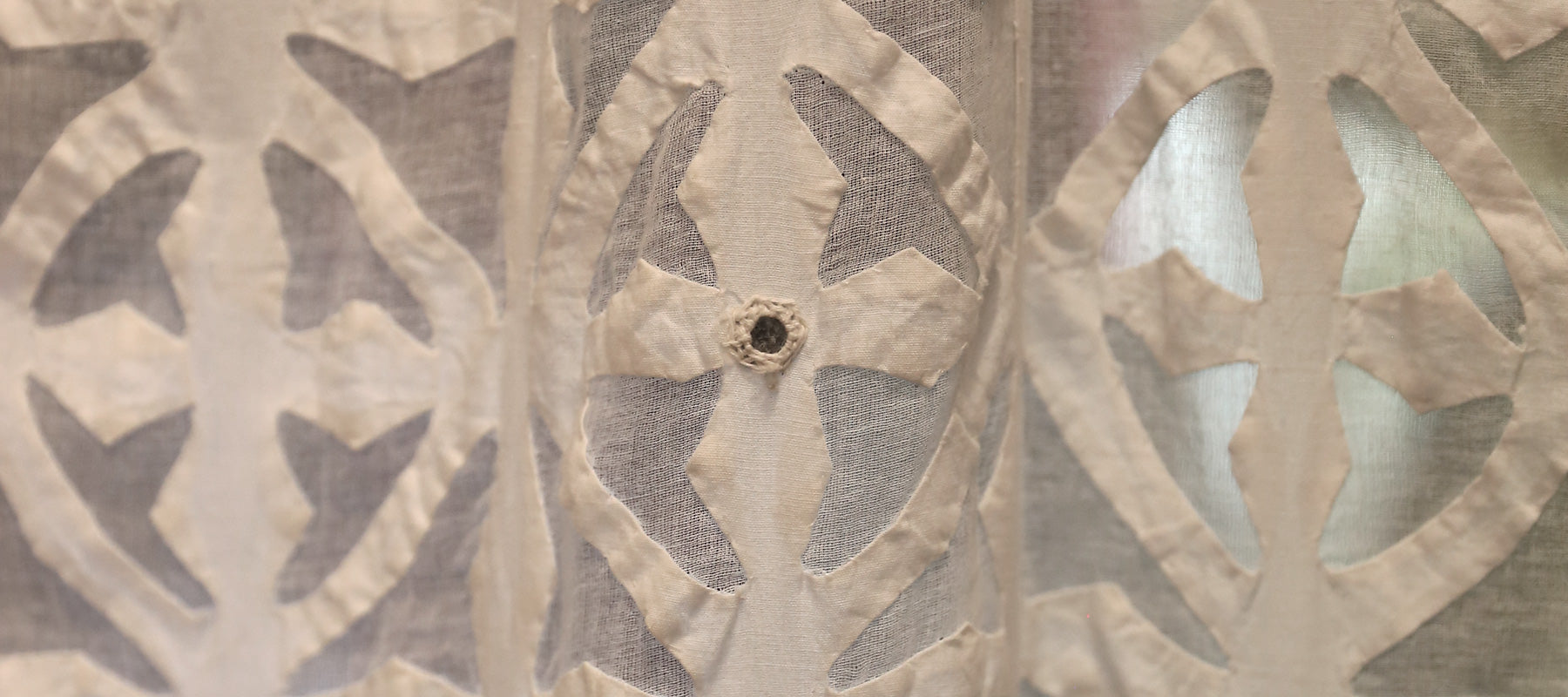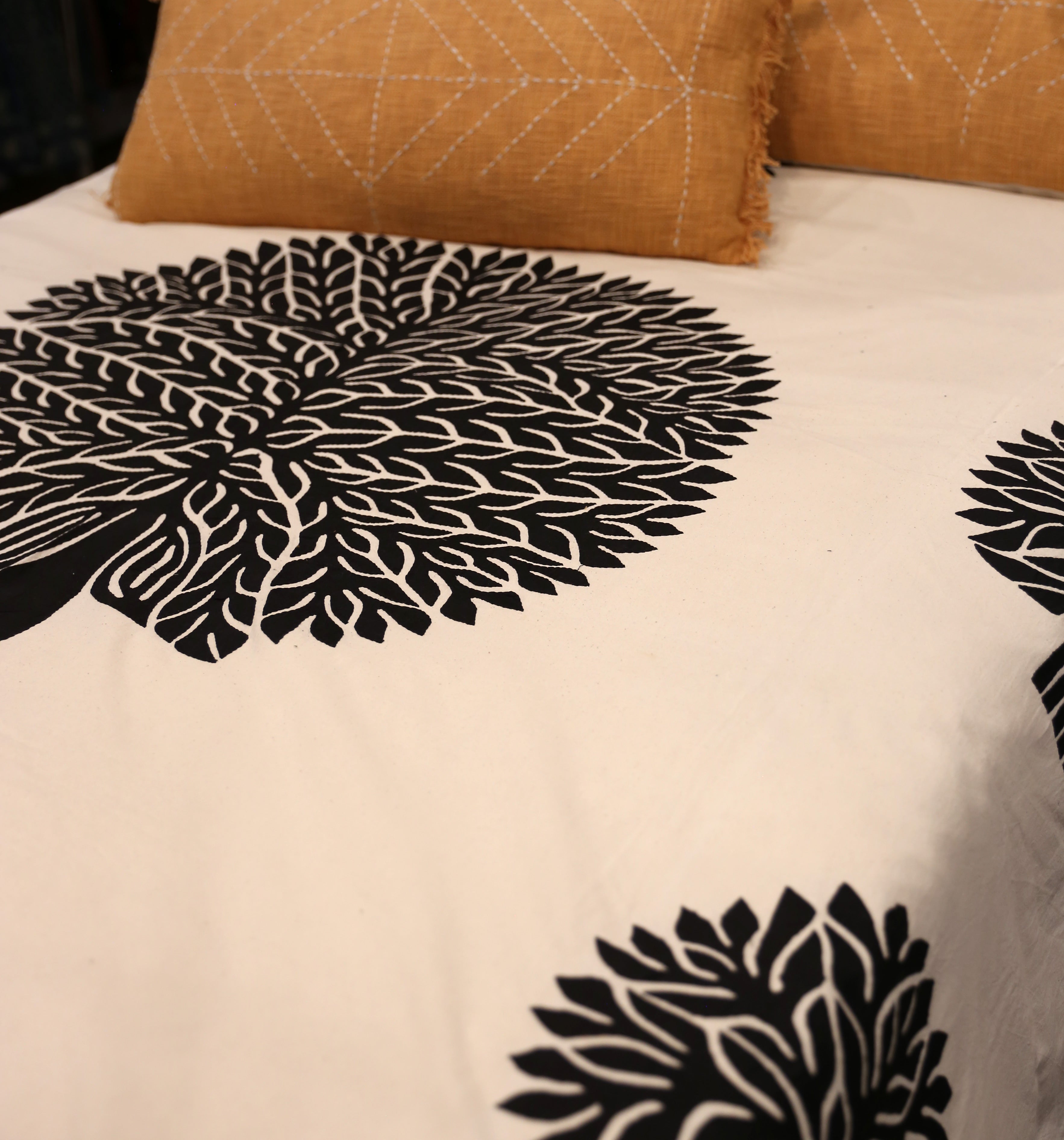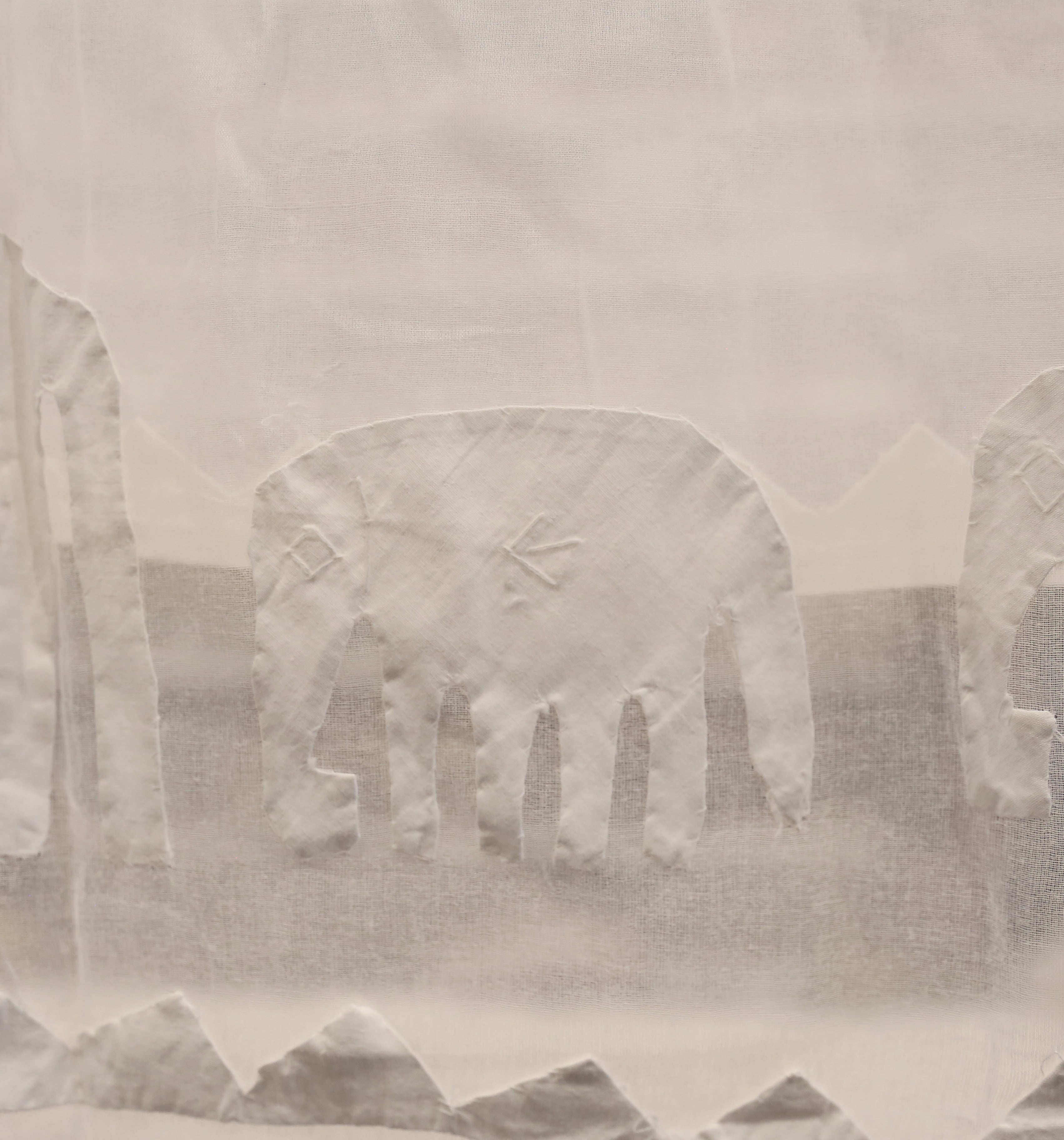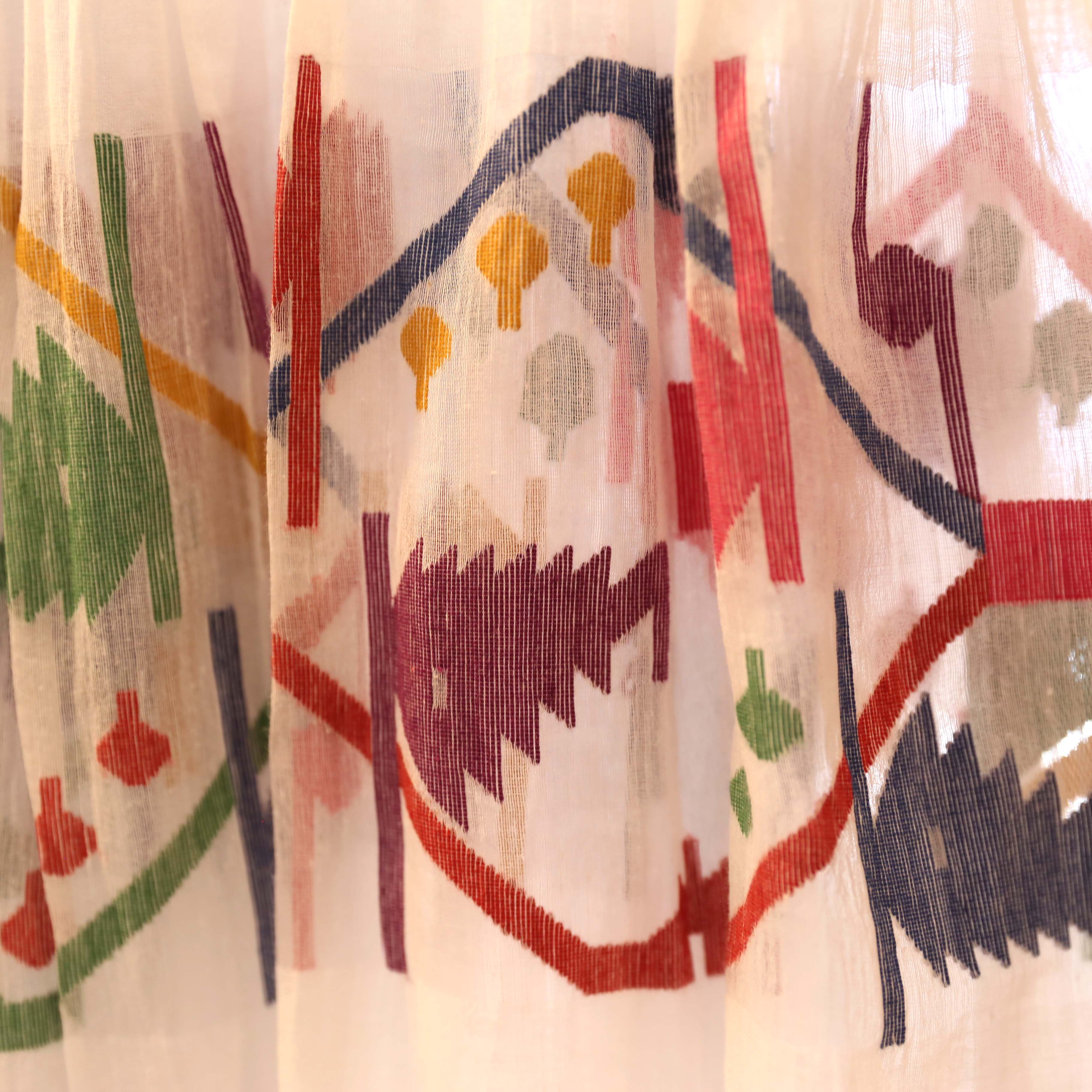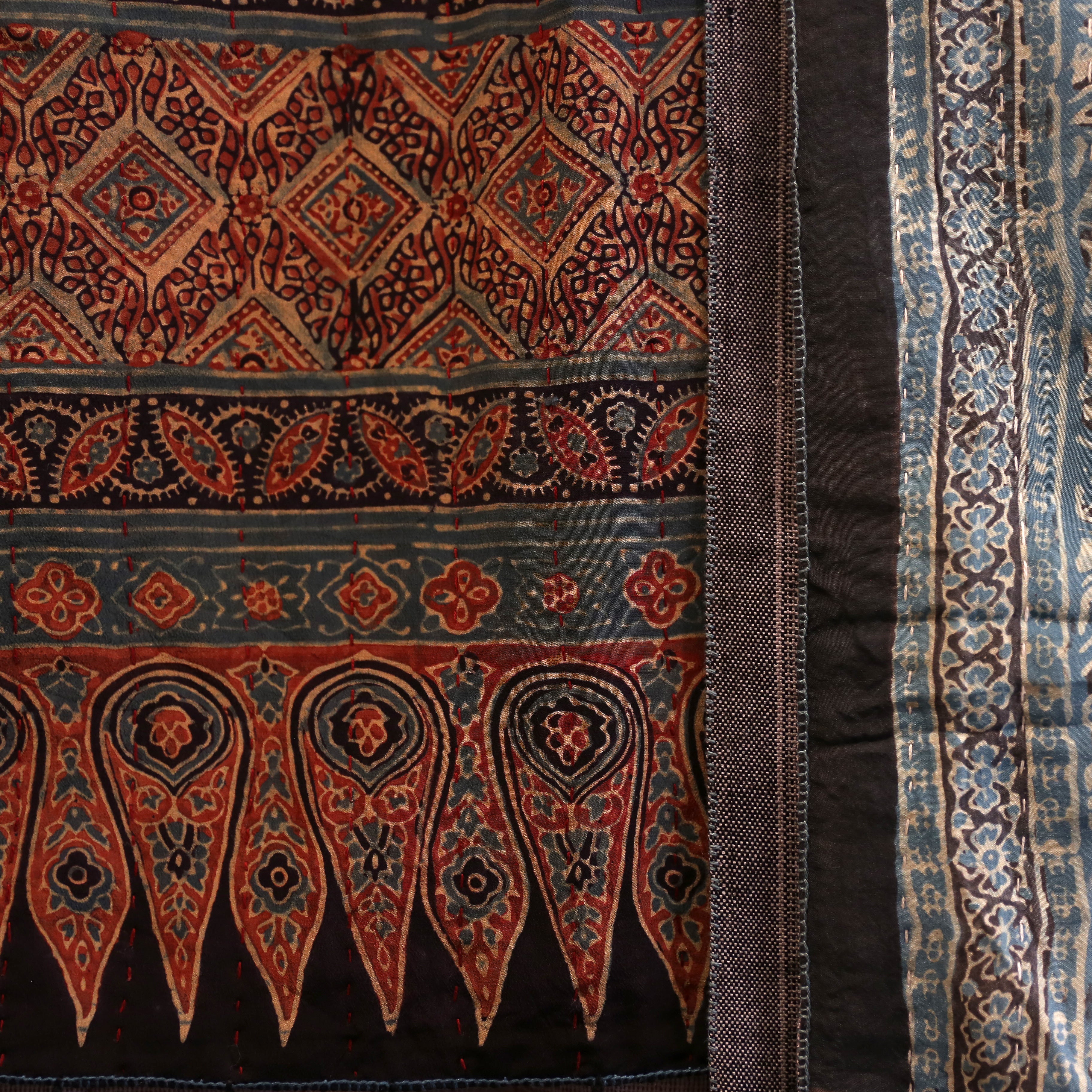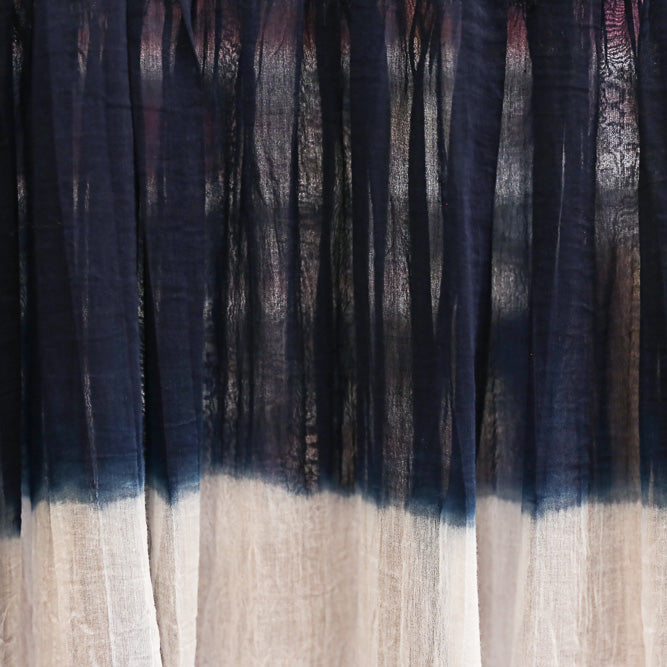White on White Applique
Translucent hand stitched applique is created by using two different layers of cotton. The design is cut on a medium-weight layer and appliqued onto a fine lightweight cotton. The combination creates a translucent design which is accentuated when the light pours through.
Each applique piece is one of a kind. They work well as bed spreads, table coverings or as curtains. Use them to tone down bright sunlight or to create a diaphanous separation between spaces.
Background
During the time of the Muhgals, applique work became an imperial style of elegant textile products and was the most popular craft used in almost every celebration in the country. Muslin fabrics used with architectural Jal patterns are very much renowned in applique work. Traditional motifs are also seen in the art form such as elephants, parrots, peacocks flower and creepers.
Appliqué and patchwork traditions exist among most communities in India with each geographical region having its own particular aesthetic. Festive patchwork textiles created for special occasions are found in many places throughout India.
Applique and patchwork are very ancient techniques. The only difference between them is that patchwork or piecework is the process of seaming small pieces of fabric into a larger whole, while Applique is the process of sewing fabric onto a larger background fabric - a technique of forming a single pattern with different pieces of cloth, creating beautiful and decorative items.
Nomadic people of the desert have long pieced together their tents and even decorated them with elaborate appliqué. Pieces and appliqué household items are made by women for dowries - including decorative bags, pillows and sitting mats.
Patchwork has long been used to make clothing, because most clothing is used until it is worn out and then reused to create beautiful patterns out of the work fabric, serving both economic and decorative purposes.
For many embroidery styles, master craftwork depends on keen eyesight. By middle age, women can no longer see as well and they naturally turn their skills and repertoire of patterns to patchwork, a tradition that was originally devised to make use of old fabrics. Women need not feel their earning days are numbered as they get older and their eyesight diminishes. The elder patch and applique artisans, as well as younger embroiderers, can earn.

